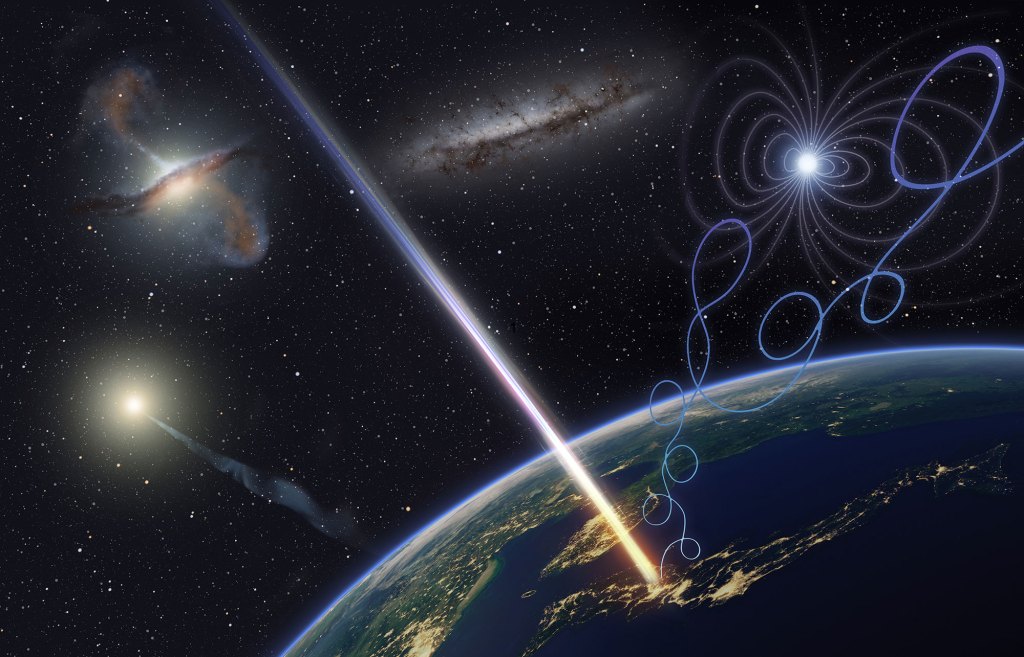Scientists may have found the smallest black hole ever detected thanks to a new technique of combining multiple datasets, according to a study published on Thursday in Science.
The black hole is around 3.3 times as massive as the Sun, scientists believe, and is in a binary system called J05215658 that is located about 10,000 light years away in the outer edge of the Milky Way’s disk. Though more research is required to confirm its small mass, it’s possible that this object is part of a mysterious class of small black holes that have previously escaped detection. This is mainly because nobody has figured out how to look for them.
Videos by VICE
“It’s always interesting in astronomy when you look in a new way, and you find a new type of thing,” said lead author Todd Thompson, a professor of astronomy at The Ohio State University, in a phone call. “It makes you think that all your ways of looking before were biased.”
Most observable black holes are about five to 15 times as massive as the Sun, but those objects are not an objective sampling of all black holes lurking out there in the universe. Black holes of this size are simply easier to spot. When they closely orbit stars in binary systems, the holes pull material off their companions. This accretion process emits luminous X-ray radiation that is observable to telescopes.

Black holes that are only about two to five times as massive as the Sun, assuming they exist, do not seem to produce this X-ray signature, rendering them basically invisible to scientists.
“I was specifically interested in finding these non-interacting systems, the dark unknown and unseen population that must be out there,” Thompson said.
When a star explodes into a supernova, its afterlife is determined by its mass. Smaller stars become neutron stars, which are super-dense spheres, while larger stars become black holes. But scientists are not sure just how massive a star has to be to become a black hole, or if there is, perhaps, an intermediary process in which a star temporarily becomes a neutron star and then evolves into a black hole.
“We’ve wondered whether there’s anything there between the most massive measured neutron stars, which are about 2.1 times the mass of the Sun, and the least massive well-measured black holes, which are at five solar masses,” Thompson explained. “So, there’s this gap.”

To fill in this blank, Thompson’s team screened observations of about 100,000 stars in the Milky Way using the Apache Point Observatory Galactic Evolution Experiment (APOGEE).
The researchers searched for signs of stars in binary systems with black holes in much the same way that some exoplanet researchers detect worlds around other stars. By observing whether the stars appear to be gravitationally influenced by a nearby object, the team narrowed down the stars to a few hundred candidates likely to have companions.
The researchers then used data from the All-Sky Automated Survey for Supernovae (ASAS-SN) to further refine the search for the right system. “By combining those two datasets, in literally one day, we found this star,” Thompson said. “That turned out to be an incredibly efficient way of finding this interesting object.”
While 3.3 solar masses is the most likely estimate presented in the study, the team cautions that the J05215658 object could potentially be anywhere from 2.5 times to about five times as massive as the Sun. A few other black holes have been discovered with error margins that overlap with this range, so it would be premature to declare this object as the smallest black hole ever found.
“If it is confirmed at 3.3 solar masses, it would be very peculiar and the lowest-mass black hole,” Thompson said.
But as more teams follow up on the new study, and employ the technique pioneered by Thompson and his colleagues, this longstanding mystery may be resolved.
“It’s going to be an even bigger story as the years march by because a lot of groups are starting to do this now,” Thompson said.




